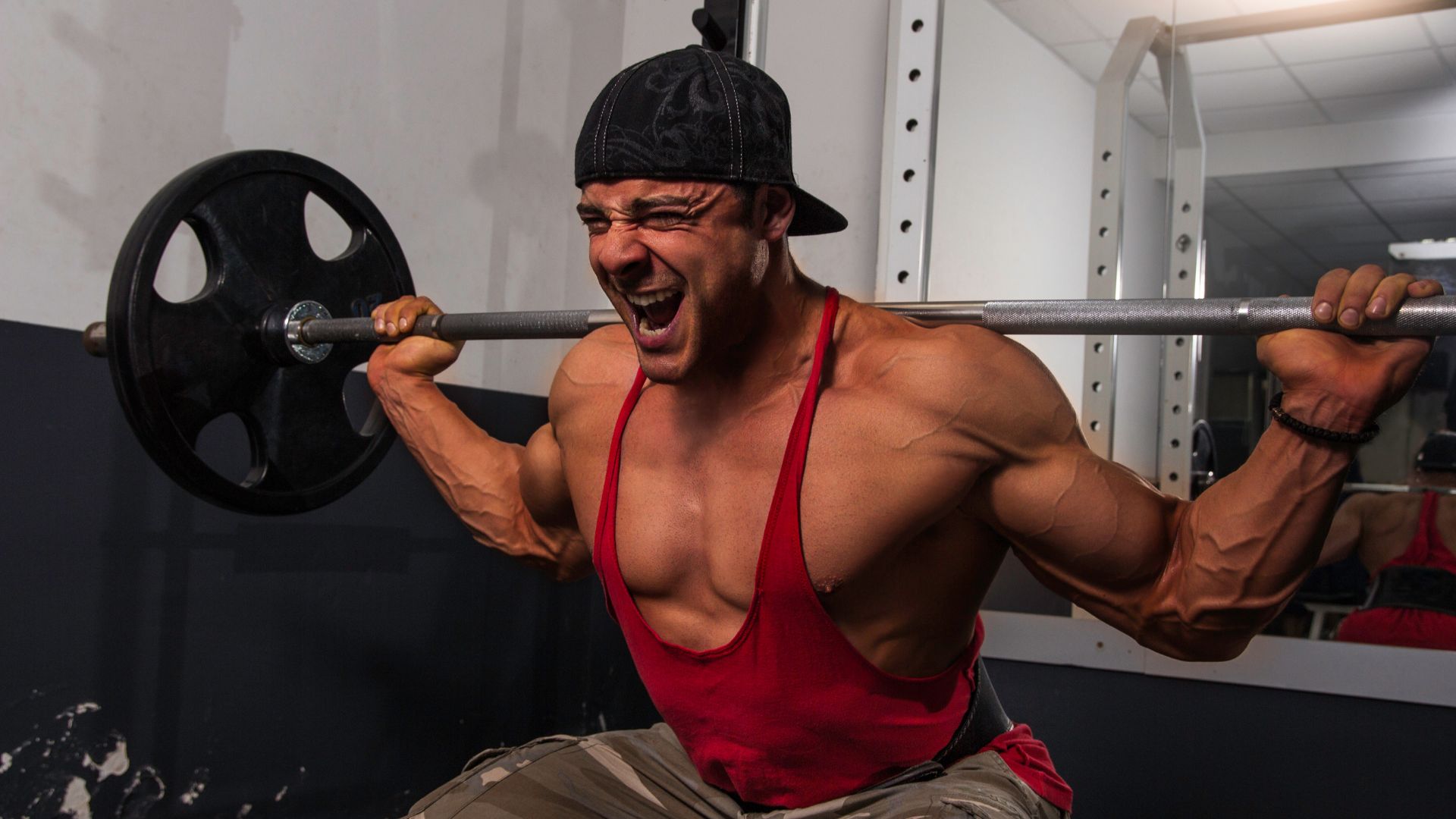Have you ever found yourself wondering why, despite your impressive 1.5 times bodyweight squat, dunking a basketball remains an elusive dream? It’s a common frustration among aspiring dunkers, and the answer lies beyond just raw strength.
In this blog post, we’re about to dive deep into the intriguing world of vertical jumps, exploring the factors that influence your dunking ability beyond the weightlifting rack.
So, let’s unravel the mystery together and discover what it takes to soar above the rim.
Unleashing Your Squat Power: Why You Can’t Dunk Even Though You Can Squat 1.5x My Bodyweight.
Not being able to dunk despite squatting 1.5 times your body weight could be attributed to several factors.
While a strong squat is beneficial for jumping ability, it’s not the sole determinant of your vertical leap.
Here are some specific factors to consider:
Jumping Technique: Dunking involves a combination of strength and technique.
Proper jumping technique, which includes using your arms, timing, and body positioning, is crucial for maximizing your vertical jump.
If your technique is lacking, it can significantly limit your jumping ability.
Explosiveness: Squats primarily develop slow-twitch muscle fibers, which are essential for strength but not as critical for explosive movements like jumping.
Plyometric exercises, such as box jumps and depth jumps, help train fast-twitch muscle fibers, improving your ability to generate explosive force.
Relative Strength: While squatting 1.5 times your body weight is impressive, it’s not the only measure of lower body strength.
Relative strength, which considers your body weight in relation to the weight you lift, is also crucial. If you have excess body fat, it can negatively impact your ability to jump as effectively.
Flexibility and Mobility: Limited ankle, hip, or knee mobility can hinder your jumping ability. Proper range of motion in these joints is essential for an efficient and powerful jump.
Regular stretching and mobility exercises can help improve this aspect.
Core Strength: A strong core stabilizes your body during take-off and landing when you jump.
Weak core muscles can lead to poor posture and form during a jump, reducing your ability to gain height.
Inadequate Training: If your training program focuses solely on squats and neglects other aspects of jump training, it may not be optimized for dunking.
A well-rounded program that includes plyometrics, agility drills, and jumping practice is essential.

Genetics: Genetics play a role in your physical abilities. Some people naturally have a higher proportion of fast-twitch muscle fibers, making them more predisposed to jumping higher.
However, this doesn’t mean you can’t improve your vertical leap through training and dedication.
Recovery and Overtraining: Overtraining or inadequate recovery can hinder your progress. Make sure you allow your muscles time to recover between intense training sessions to avoid fatigue and potential injuries.
To improve your dunking ability, consider incorporating plyometrics, agility drills, and jumping-specific exercises into your training regimen.
Also, focus on refining your jumping technique and addressing any mobility or flexibility limitations.
Consulting with a coach or trainer who specializes in vertical jump training may be beneficial in tailoring a program to your specific needs and goals.
Further Explanations.
Let’s dive deeper and elaborate further on all the points mentioned.
Firstly let’s delve deeper into the aspects of jumping technique and explosiveness to understand their significance in your ability to dunk.
1. Jumping Technique:
Arm Movement:
Proper arm movement is crucial when jumping. The arms can contribute significantly to your vertical leap. When you initiate a jump, your arms should be swung forcefully upward.
This upward motion of the arms helps create upward momentum and assists in propelling your body off the ground. If you don’t coordinate your arm movement effectively, you miss out on this additional force.
Timing:
Timing is everything in jumping. The moment at which you push off the ground and extend your body matters.
You should aim to jump at the peak of your squat or crouch, as this is when your muscles are primed to generate maximum force.
A slight delay or mistiming can significantly reduce your jump’s effectiveness.
Body Positioning:
Your body’s position during takeoff and in the air impacts your ability to reach the basket. As you jump, you should aim to extend your hips, knees, and ankles simultaneously.
A common mistake is not fully extending the hips, which limits the height of the jump. Additionally, maintaining an upright posture during the jump allows you to use your entire lower body effectively.
Landing:
Proper landing technique is often overlooked but essential for injury prevention and overall jump effectiveness.
After dunking or attempting a jump, it’s crucial to land with bent knees to absorb the impact gradually.
Landing with stiff legs can lead to injuries and affect your ability to perform subsequent jumps.
2. Explosiveness:
Fast-Twitch Muscle Fibers:
Our muscles are composed of different types of muscle fibers, primarily slow-twitch and fast-twitch.

Slow-twitch fibers are more geared toward endurance and sustained effort, while fast-twitch fibers are responsible for explosive, high-intensity movements.
When you squat, you primarily target the slow-twitch fibers, which are essential for generating strength over time but not for quick bursts of power.
Plyometric Training:
Plyometric exercises involve rapid stretching and contracting of muscles and are designed to develop fast-twitch muscle fibers.
Movements like box jumps, depth jumps, and squat jumps require your muscles to contract explosively, teaching them to generate maximum force in a short amount of time.
This type of training enhances your ability to explode off the ground, crucial for achieving a higher vertical jump.
In all this, mastering jumping technique involves optimizing the use of your arms, perfecting the timing of your jump, maintaining proper body positioning, and practicing safe landing.
Developing explosiveness, on the other hand, entails training your fast-twitch muscle fibers through plyometric exercises to generate rapid, powerful movements.
Combining these elements with a strong squat foundation can significantly improve your vertical jump and, consequently, your ability to dunk a basketball.
let’s delve deeper into the concepts of relative strength, flexibility, and mobility and their impact on your ability to jump effectively:
3. Relative Strength:
Relative strength is a measure of strength that takes into account your body weight in relation to the weight you lift.
It’s a crucial factor in determining your ability to perform various physical feats, including jumping. Here’s a more in-depth explanation:
Excess Body Fat:
Carrying excess body fat can hinder your jumping ability. This is because body fat adds to your overall weight without contributing to your muscle strength.
If you have a high body fat percentage, it can make it more challenging to generate the power needed to propel your body off the ground effectively.
Lean Muscle Mass:
To improve your relative strength for jumping, it’s important to focus on building lean muscle mass while reducing excess body fat.
Strength training exercises that target your lower body, like squats and deadlifts, are valuable for developing this lean muscle mass and increasing your power-to-weight ratio.
Nutrition:
Nutrition plays a significant role in managing body composition. A balanced diet that supports muscle growth while reducing fat can help improve your relative strength.
Working with a nutritionist or dietitian can be beneficial in creating an appropriate eating plan.
4. Flexibility and Mobility:
Efficient jumping requires proper range of motion in key joints, including the ankles, hips, and knees.
Limited mobility in these areas can hinder your ability to perform a powerful and efficient jump. Here’s a deeper explanation:
Ankle Mobility:
Ankle mobility is crucial for dorsiflexion, which is the bending of the ankle, allowing you to push off the ground effectively during a jump.
Limited ankle mobility can restrict your ability to achieve a full range of motion, reducing your jump height. Regular ankle mobility exercises, like calf stretches and ankle circles, can help improve this.
Hip Mobility:
Hip mobility is essential for proper leg extension during a jump. If your hips are tight, it can lead to an inefficient jump where you can’t fully extend your legs. Hip-opening stretches and exercises can improve hip mobility.
Knee Mobility:
Good knee mobility is vital to absorb the impact when you land after a jump. Restricted knee mobility can increase the risk of injuries and decrease your jumping efficiency. Exercises that promote knee flexibility and stability can be beneficial.
Dynamic Warm-ups:
Incorporating dynamic warm-up exercises that target these areas before jump training sessions can help improve mobility and reduce the risk of injury.
In essence, relative strength is the ratio of your strength to your body weight, and reducing excess body fat while increasing lean muscle mass is essential for improving your jumping ability.
Flexibility and mobility in the ankles, hips, and knees are vital for achieving the proper range of motion during a jump, which can significantly impact your jump height and efficiency.
Integrating strength training, mobility exercises, and a healthy diet into your training regimen can help address these aspects and enhance your overall jumping performance.
Let’s explore in more detail the significance of core strength and the importance of a well-rounded training program in improving your dunking ability:
5. Core Strength:
Stabilization during Take-off:
When you jump, especially when attempting to dunk, your core muscles play a crucial role in stabilizing your body. A strong core helps maintain proper posture and alignment as you push off the ground.
This stability allows you to direct the force generated from your lower body more efficiently into the upward motion of your jump.
Mid-Air Control:
While in the air, core strength aids in controlling your body’s position and balance. This control is essential for accurately positioning yourself for the dunk and ensuring that you can reach the basket with the ball.

Landing Impact:
After a successful dunk or jump, landing safely is vital to prevent injuries. A strong core helps absorb the impact of landing, reducing the strain on your joints and preventing potential injuries like ankle sprains or knee issues.
Transfer of Power:
Your core acts as a bridge between your lower and upper body. During a jump, it helps transfer the power generated by your lower body, particularly your legs, to your upper body for effective arm movement.
This synchronization is essential for maximizing your vertical leap.
6. Inadequate Training:
Squat Focus:
Relying solely on squats for training can limit your overall jump improvement.
While squats build lower body strength, they may not address the specific explosive power and technique required for jumping.
A well-rounded training program should incorporate various exercises targeting different aspects of jump performance.
Plyometrics:
Plyometric exercises, such as depth jumps, bounding drills, and jump variations, are essential for developing explosive power and improving the stretch-shortening cycle of your muscles. These exercises mimic the rapid muscle contractions needed during a jump.
Agility Drills:
Agility drills improve your coordination, balance, and quick directional changes, which are beneficial for court sports like basketball. Enhanced agility can help you make the most of your jumping ability during game situations.
Jumping Practice:
Practice makes perfect. Regularly practicing your jumps, focusing on technique and explosiveness, can help reinforce your muscle memory and improve your dunking ability.
Rest and Recovery:
A well-rounded training program also considers rest and recovery. Overtraining can lead to fatigue and decreased performance. Adequate rest allows your muscles to repair and grow stronger.
In other words, core strength is crucial for maintaining stability, control, and power during take-off, mid-air, and landing phases of a jump.
Neglecting core training can lead to poor posture and form, limiting your ability to gain height when attempting to dunk.
Additionally, a comprehensive training program should encompass a variety of exercises, including plyometrics, agility drills, and specific jump practice, to address the diverse factors influencing your dunking ability.
This holistic approach not only improves your physical attributes but also refines your technique and timing, resulting in a more effective and impressive vertical leap.
Let’s explore the roles of genetics and recovery in more depth:
7. Genetics:
Muscle Fiber Composition:
Genetic factors can influence your muscle fiber composition. Some individuals are born with a higher percentage of fast-twitch muscle fibers, which are well-suited for explosive movements like jumping.
These individuals may have a natural advantage when it comes to vertical jumping. However, it’s crucial to note that genetics don’t determine your ultimate potential.
Even if you don’t have a genetic predisposition for a high proportion of fast-twitch fibers, you can still significantly improve your vertical leap through dedicated training and the right approach.
Body Proportions:
Genetic factors also affect your body’s proportions, such as the length of your limbs and the ratio of your torso to your legs.
These proportions can influence your biomechanics and how you generate power during a jump.
While you can’t change your genetic makeup, you can optimize your training to work with your body’s specific characteristics.
Metabolic Rate:
Genetics can influence your metabolic rate and how efficiently your body burns calories and builds muscle.
Some individuals naturally have a faster metabolism, which can affect body composition and muscle development.
Regardless of your metabolic rate, a well-structured training program and nutrition plan can help you maximize your physical potential.
In summary, genetics can provide a starting point for your physical abilities, but they don’t define your limits.
With the right training, dedication, and smart approaches, you can make substantial improvements in your vertical leap and overall athletic performance.
8. Recovery and Overtraining:
Importance of Recovery:
Recovery is a critical component of any training program. When you engage in intense physical activities like strength training, plyometrics, and jump practice, your muscles undergo stress and micro-tears. Proper recovery allows these muscles to repair and grow stronger, leading to improvements in performance.
Overtraining Risks:
Overtraining occurs when you don’t allow your body enough time to recover between intense workouts.
This can lead to fatigue, decreased performance, and an increased risk of injury. Overtraining can also negatively impact your central nervous system and mental well-being.
Recovery Strategies:
To optimize recovery and avoid overtraining, consider the following strategies:
Adequate Sleep:
Ensure you get enough sleep, as this is when your body does most of its repair and recovery work.
Nutrition:
Consume a balanced diet with an emphasis on protein and micronutrients to support muscle repair and growth.
Hydration:
Stay well-hydrated to aid in muscle recovery and prevent cramps.
Active Recovery:
Incorporate active recovery sessions, such as light stretching or low-intensity activities, to promote blood flow and reduce muscle stiffness.
Rest Days:
Include rest days in your training plan to allow your body to fully recover. These days can also help prevent mental burnout.
Overall, recovery is not a passive process but an active part of your training.
Overtraining can hinder your progress and increase the risk of injury, so it’s essential to prioritize recovery strategies and listen to your body’s signals.
By striking a balance between intense training and proper recovery, you can make consistent gains in your vertical leap and overall athletic performance.
A Complete tabular on this topic here.
Here’s a complete tabular breakdown of the reasons why you might not be able to dunk even though you squat 1.5 times your body weight:
| Factors | Explanation |
|---|---|
| Jumping Technique | Proper jumping technique, including arm movement, timing, and body positioning, is essential for maximizing your vertical jump. Inadequate technique can limit your jump height. |
| Explosiveness | Squatting primarily develops slow-twitch muscle fibers, important for strength but not explosive movements. Plyometric exercises target fast-twitch fibers needed for powerful jumps. |
| Relative Strength | Squatting 1.5 times your body weight is impressive, but relative strength (body weight in relation to lifted weight) matters. Excess body fat can reduce your power-to-weight ratio. |
| Flexibility and Mobility | Proper joint mobility, including ankles, hips, and knees, is crucial for efficient and powerful jumps. Limited mobility can hinder your jump height and form. |
| Core Strength | A strong core stabilizes your body during take-off and landing, essential for proper posture and form. Weak core muscles can limit your jump’s effectiveness. |
| Inadequate Training | Focusing solely on squats neglects other aspects of jump training. A well-rounded program with plyometrics, agility drills, and jumping practice is necessary for dunking. |
| Genetics | Genetics play a role in your muscle fiber composition, body proportions, and metabolic rate. Some individuals may have genetic advantages for jumping, but training can still lead to improvement. |
| Recovery and Overtraining | Inadequate recovery or overtraining can hinder progress. Proper rest, nutrition, hydration, and active recovery are crucial to avoid fatigue and injury, allowing for consistent improvement. |
These factors interact and collectively influence your ability to dunk. Addressing these aspects through targeted training and technique refinement can help you reach your dunking goals.
Conclusion on this topic
Despite squatting 1.5 times your body weight, your inability to dunk may be attributed to various factors beyond pure strength.
Dunking relies on a combination of explosive power, proper technique, mobility, core strength, and genetics.
Focusing solely on squats neglects these critical elements, and addressing them through a well-rounded training program and technique refinement is essential for achieving a successful dunk.

Hey there, it’s Mike Rrsq, the Editor-in-Chief over at Jsquat.com, and I’m absolutely obsessed with all things squat fitness! I’ve been lucky enough to get some serious recognition for my work in this field. With a solid background in the fitness and wellness industry, I’ve been there right from the get-go, helping shape this website into what it is today.
You see, I’m not just the boss around here; I’m also a passionate contributor. I love sharing my insights through my articles, and trust me, they’re not your run-of-the-mill stuff. Each piece I write is a labor of love, filled with my expertise and real-world experience in the fitness universe. So, if you’re into fitness and looking for some inspiration, you’re in the right place!

